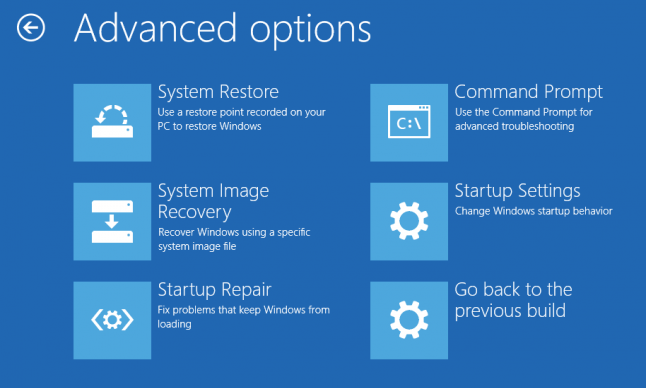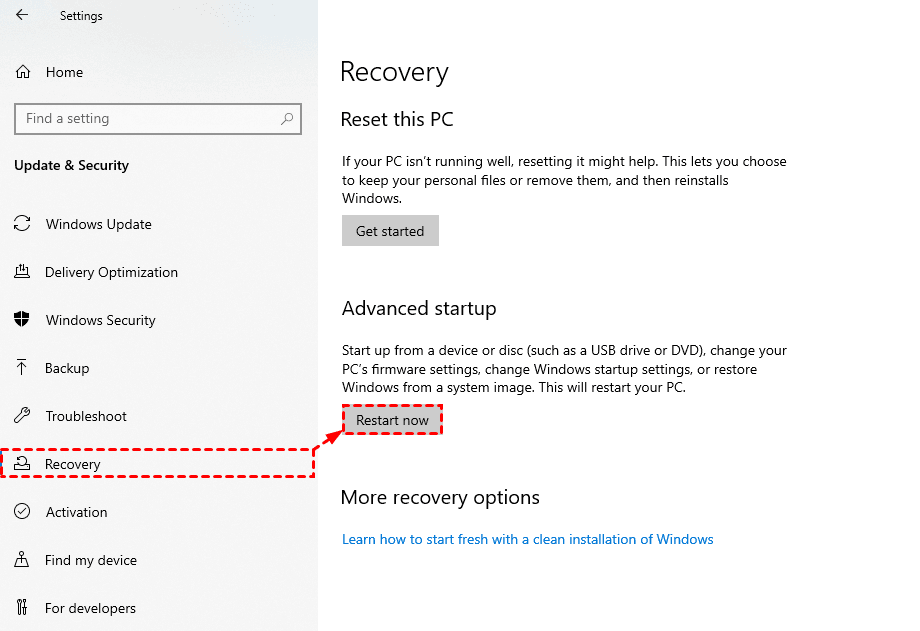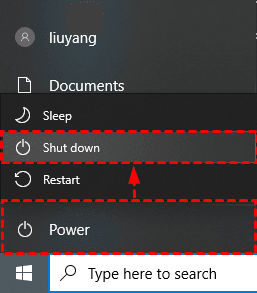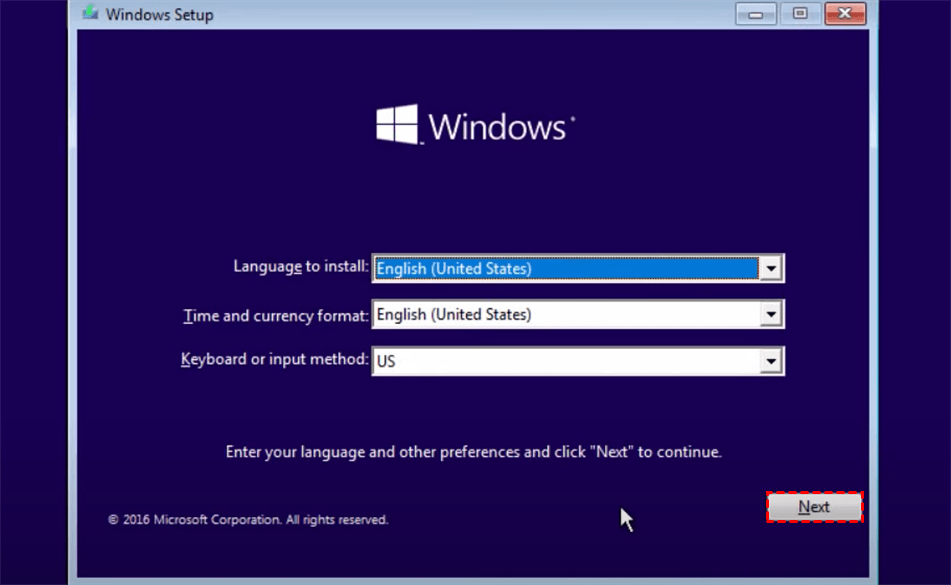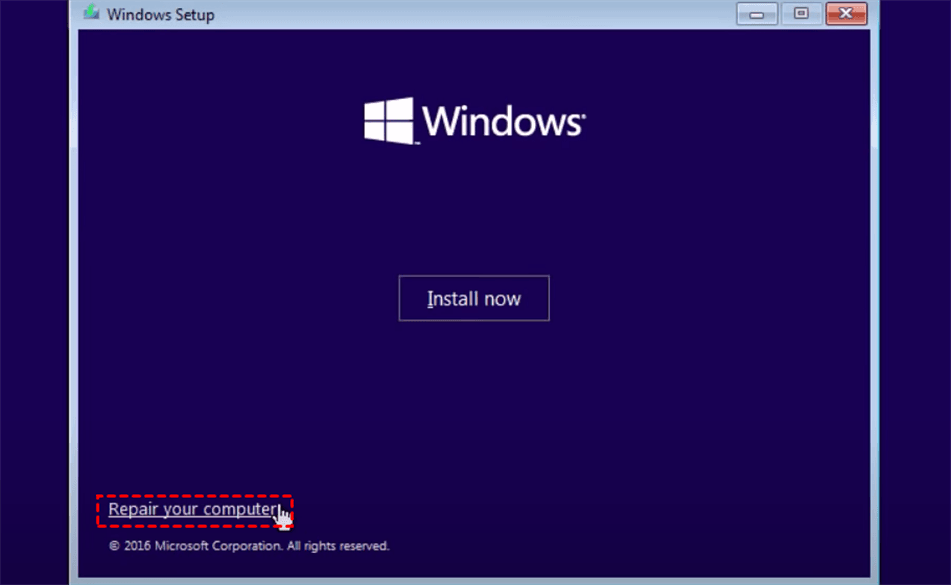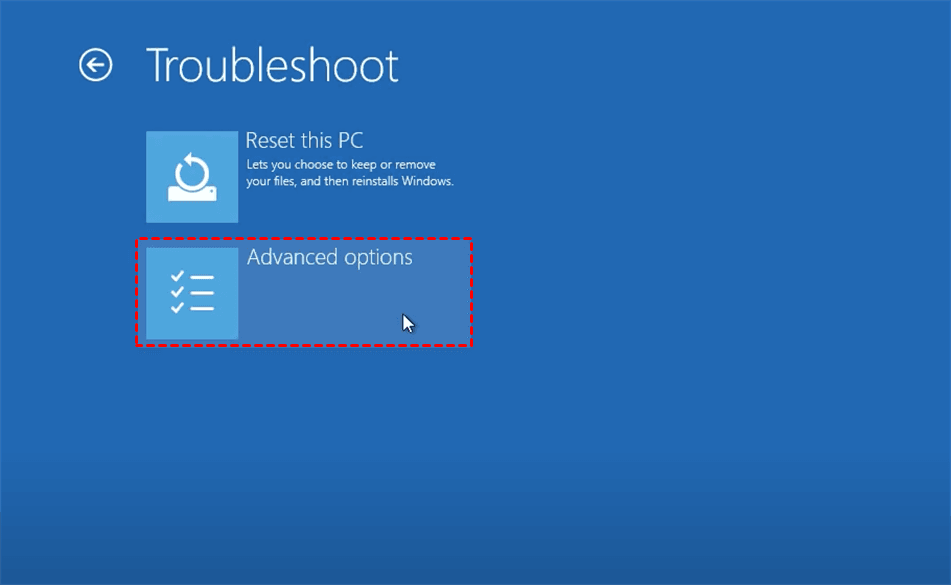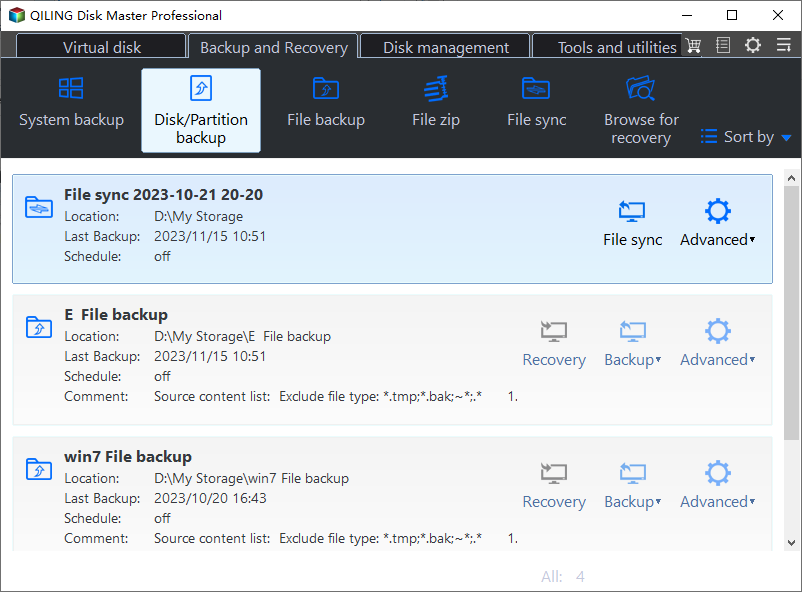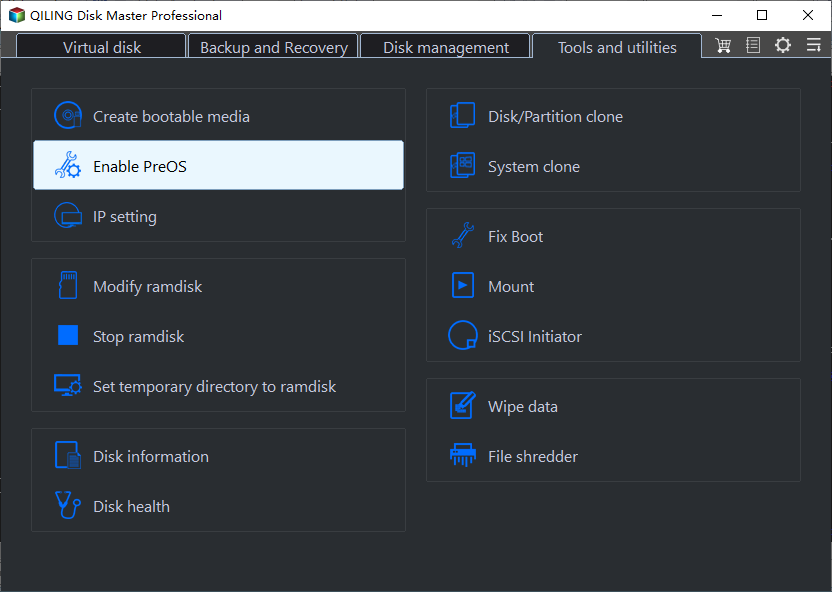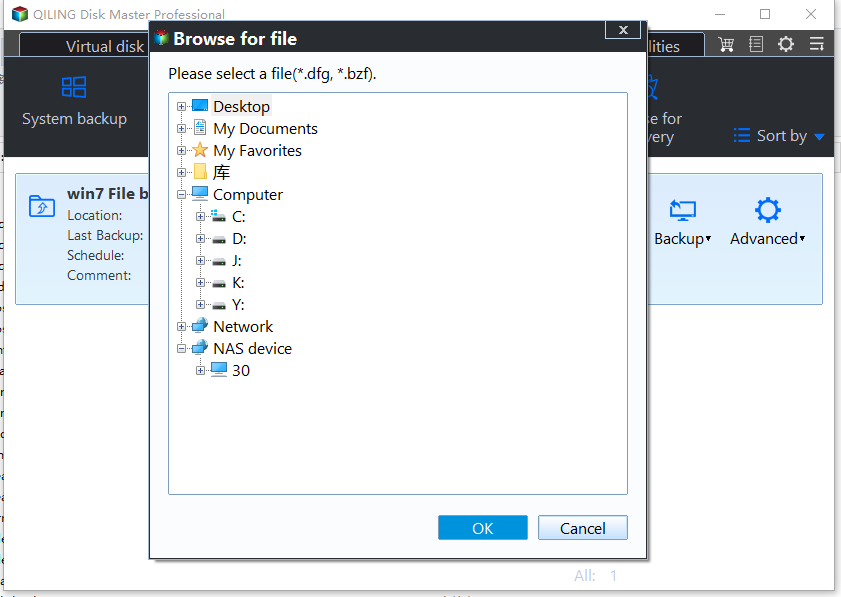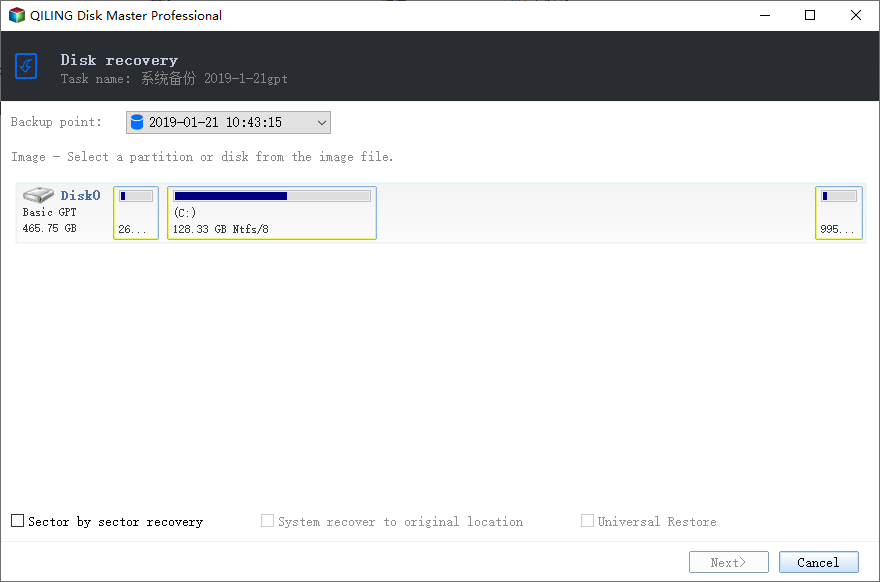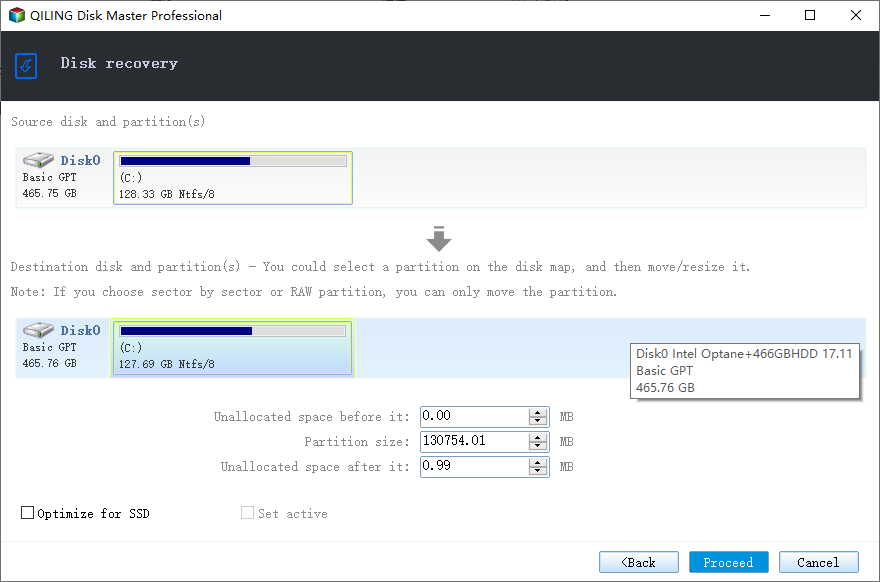Enter Windows 10 Recovery Mode for Advanced Options | Guide
What Can Windows Recovery Mode Do?
Windows recovery mode is a recovery environment (WinRE) containing a series of Advanced Startup Options to troubleshoot, repair and restore the system. More specifically, Windows 10 recovery mode inherits most of recovery options in earlier OS, such as:
Startup Repair - Scans and fix problems that keep Windows from loading.
System Restore - Restore your computer to a previous restore point to solve system problems.
System Image Recovery - Restore your computer from a previous system image backup.
Command Prompt - Run various command-line for advanced troubleshooting.
Startup Settings - Change Windows startup behavior and try for debugging.
To figure out what are these Windows 10 recovery options exactly for, you can refer to this Microsoft page. If what you really want to do is enabling Safe Mode, then you just need to enter recovery environment with the following methods, and select Safe Mode under Startup Settings.
Now, let's see how to access Windows 10 recovery environment for advanced options.
How to Enter Windows 10 Recovery Mode
To make use of recovery options like System Restore, Startup Repair, Safe Mode and so on, you need to enter Windows 10 recovery environment first.
If your problem is not serious and the computer can still log into Windows, then the approach is very easy. But if your computer fails to boot suddenly, it will take a few extra steps to start Windows 10 in recovery mode.
- Enter Windows 10 recovery mode from Windows
- Enter Windows 10 recovery mode from boot
- Possible errors of Windows recovery options
- Easier way to perform system recovery in Windows 10
✍Prevention is better than compensation
Windows 10/11 recovery options don't always fix your problems. Try this system backup & recovery tool to protect your computer securely and easily. More »
Enter Windows 10 recovery mode from Windows
There are two approaches to access recovery mode inside Windows 10.
Approach 1. Click Start button > choose Settings > select Update Security > go to Recovery tab > click Restart Now under Advanced startup.
Approach 2. Click Start button > Power > Hold the Shift key and click on Restart.
Either way, you can start Windows 10 in recovery mode and click Troubleshoot > Advanced to get access to Windows recovery options.
Tips:
- Approach 2 also applies to sign-in screen. Just hold the Shift key while clicking Power > Restart.
- If you are trying to enter recovery mode for system restore, you can also search for “restore point” in Windows, and click System Restore... under System Protection tab, then follow the wizard to complete it. Alternatively, you could use a powerful backup and restore tool to protect your data and operating system in case of unexpected errors.
Enter Windows 10 Recovery mode from boot
If you cannot log on to Windows properly, there are 2 common ways to make Windows 10 boot into recovery mode.
Method 1. Boot Windows 10 in recovery mode with installation disc or recovery drive
A bootable media is required to enter Windows 10 Recovery Environment (WinRE) and get access to Advanced Startup Options.
Step 1. Insert the installation disc.
Step 2. Select the language and region in Windows Setup.
Step 3. Click Next, and then Repair your computer.
Step 4. Click Troubleshoot > Advanced.
Tips: if you don’t have an installation disc, you can create a recovery drive by yourself.
Method 2. Boot Windows 10 in recovery mode without installation or recovery disc
Usually a Windows 10 computer will boot into recovery mode when if fails to start for 3 times. So you can hold the power button to turn off the PC, then power it on. When Windows logo appears, power it off again. Repeat this process once more. You should be able to access Windows 10 recovery options from boot after 3 forced shutdowns.
Possible errors of Windows recovery options
In fact, questions about Windows 10 recovery options are not uncommon in relevant forums. You may enter recovery mode actively or passively and run into different problems. Here I've compiled some of the representative errors.
Windows 10 System Restore stuck on initializing or restoring
Windows 10 Startup Repair not working
System Restore fail with error code 0x8007045b
Windows cannot find a system image on this computer
...
There are even more problems you may encounter in practical use. If your Windows 10 recovery options don’t work, or you want a simpler way to restore Windows 10 with higher success rate, the following method is worth a shot.
Easier Way to Perform System Recovery in Windows 10
Windows Advanced Startup Options could solve many system problems as long as you use them properly. But there’s no 100% guarantee.
After a series of cumbersome steps to access recovery mode in Windows 10, you may still fail to perform a Startup Repair, System Restore, System Image Recovery, etc., and even make things worse with improper operations.
Therefore, an effective system backup and recovery tool may be a easier and more secure choice.
- Solution 1. Best freeware to recover Windows 10 without losing data
- Solution 2. Onekey system backup and recovery tool in Windows 10
Best freeware to restore Windows 11/10/8/7 without losing data
Qiling Disk Master Standard is a powerful backup & restore program with complete features to protect your data and system. It can back up Windows 10 anytime when it’s running well, and simply restore the faulty computer to a normal state.
◾ Simple and complete: This freeware enables you to backup and restore system within simple clicks. Not only OS, you can also backup files & folders, partitions, or the entire disk in case of the data loss caused by system or hard drive failures.
◾ Highly compatible: It works on Windows 11/10/8.1/8/7/XP/Vista, and the operations are all the same in different OS. You’ll understand how to operate it once seeing the intuitive interface.
◾ Automatic and flexible: Schedule backup, full/incremental/differential backup are all supported. You can also configure backup compression, splitting, etc.
◾ Handy recovery tools: It includes tools to create bootable disc orUSB. If you upgrade to higher editions, you can also create self-booting recovery environment. Thus when your computer fails to boot, you can easily get into Windows PE and restore system with an earlier backup.
◆ Create a system image in case of recovery need:
Click Backup on the left pane and choose System Backup > choose a destination to store the automatically selected system partitions (removable devices/network storages are recommended) > click Proceed.
Tips: you can click Options to manage backup settings, click Schedule to set up automatic backup, or click Scheme in advanced edition to auto delete older backups.
◆ If you are worried about unexpected system failures:
You can create a bootable media or enable the Windows 10 recovery environment of Qiling to perform backup/restore from startup even when the computer fails to boot into Windows.
▶ Create a bootable media: go to Tools tab > click Create Bootable Media > choose bootable disc type (Windows PE is recommended) > choose bootable media > click Next and wait for the progress to complete.
▶ Enable Qiling recovery environment (Advanced): upgrade to higher editions > go to Tools tab > choose Recovery Environment > tick the option Enable the boot option of … > click OK.
Tips:
>> The created WinPE disc enables you to boot from both MBR/legacy and UEFI mode.
>> If your computer already breaks down without any preparation, you could create a bootable media and a system image backup on another working Windows PC, then use Universal Restore feature (Professional edition) on the faulty computer to make it bootable after restoration.
◆ Perform Windows 11/10/8/7 recovery from boot:
1. If you can boot into Windows normally, it’s very easy to perform system restore with Qiling Disk Master. But if Windows breaks down suddenly, you may need to perform restore from boot using the recovery media or recovery environment. It’s also an easier alternative to Windows 10 recovery mode.
If you’ve enabled the recovery environment, choose Enter into Qiling Disk Master from startup; If you’ve created bootable CD/DVD or USB, connect it to start your crashed computer into Windows PE. When Qiling Disk Master pops up automatically, go to Restore tab and click Select Image File.
2. Navigate to the system image you created before. If it's on a network location, click Share/NAS and then Add Network Location to locate the image.
3. Select Restore this system backup and click Next.
4. Confirm the operation and click Proceed.
Note: if the system image is created on dissimilar hardware, please tick the advanced feature Universal Restore.
Onekey system backup and recovery tool in Windows 10
Advanced Startup Options in Win 10 recovery mode allows you to repair or restore system, but with relatively complicated steps. If you are fed up with the configurations, there’s an easier alternative to create onekey recovery option in Windows.
Qiling Disk Master is a simple yet powerful tool allowing you to create a recovery partition and perform onekey system recovery. It supports Windows 11/10/8.1/8/7/XP/Vista and Windows Server 2003/2008/2011/2012/2016 on all brands of computers.
With it, you can onekey backup system, and specify a key (F11 or A) to enter Qiling recovery mode. Thus you can easily restore the computer to factory settings or an earlier state.
Compared with Windows 10 recovery mode, the operation is much simpler, and you don’t need any installation disc or recovery drive to get access to the recovery menu from boot.
Frequently Asked Questions about Windows 10 Recovery Mode
Q: What’s the difference between System Restore and System Image Recovery in recovery mode?
A: Both as recovery options in Windows 10, System Restore will recover Windows from a previous restore point, which is a snapshot of system configurations, and System Image Recovery will restore your computer from a system image backup, which contains all system drives and related files (additional drives are also available). If you just want to recover the system state, System Restore could help, but it cannot restore the data on your hard drive.
Q: What is Safe Mode and how’s it different from recovery mode?
A: Safe Mode means to boot Windows in a basic state with limited files and drivers. It’s often used to troubleshoot, because a problem that doesn't occur in Safe Mode won’t be caused by default settings or basic device drivers. And when the error is fixed, you can reboot the computer and log on to Windows normally.
And recovery mode, in the context of this article, it equals to Windows recovery environment which consists of a series of Advanced Startup Options like System Restore, Startup Repair, etc. Safe Mode is just one of these recovery options.
Q: How do I boot to Safe Mode in Windows 10?
A: There’s an inclusion relationship between the two - once you get access to Windows 10 recovery mode, you can find Safe Mode, too. To enable safe mode, just follow above methods to enter Windows 10 recovery mode, and click Startup Settings in Advanced Startup Options, then:
Select 4 or press F4 to Enable Safe Mode
Select 5 or press F5 to Enable Safe Mode with Networking
Select 6 or press F6 to Enable Safe Mode with Command Prompt
After booting into Safe Mode, you can try troubleshooting and fixing Windows 10. Optionally, you could backup files in Safe Mode or perform System Restore in Windows 10 Safe Mode.
Q: How do I disable or enable Windows 10 recovery environment?
A: If you have specific reasons to disable the recovery mode, you can use Command Prompt to change the status of WinRE.
Command to check status: reagentc /info
Command to disable WinRE: reagentc /disable
Command to enable WinRE again: reagentc /enable.
Conclusion
Windows 10 recovery mode offers you rich options to repair or restore computer, but it doesn’t always work and the operation is not simple. To perform system recovery, you could also use Qiling Disk Master, the powerful backup and restore software for disaster recovery.
It contains complete features and even a tool to create a bootable media. Not only Windows 10, it can help you to perform system backup & recovery in Win 11, 8, 7, etc. If you are a Windows Server user, there’s also Server edition.
In addition, there’s an onekey system backup and restore tool called Qiling OneKey Recovery. It allows you to back up Windows 10 to create a recovery partition, and press just one key to enter the recovery mode for system restore.
Related Articles
- How to Use System Restore from Boot in Windows 10/8/7?
- How to Repair Windows 10 Using Command Prompt (5 Ways)?
- Top 5 Ways to Windows 10 Recovery Environment Missing
- How to Do System Restore in Safe Mode Windows 10 Easily?
